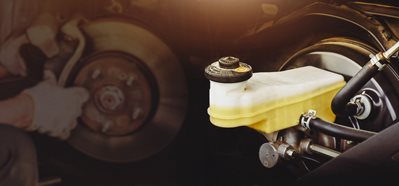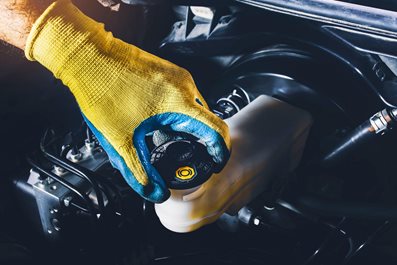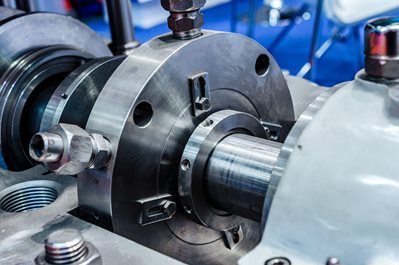How Hydraulic Fluid Contamination Can Destroy Performance

Contamination in hydraulic systems is a serious issue that can significantly affect the performance and reliability of the machinery. It refers to the presence of foreign particles, such as dirt, debris, water, or air, within the hydraulic fluid.
These contaminants can cause various problems, including reduced efficiency, increased wear and tear on components, clogging or obstruction of valves and filters, increased heat generation, corrosion damage, and, ultimately, premature system failure. Therefore, it is crucial for industries relying on hydraulic systems to take preventative measures to minimise contamination and maintain optimal performance levels for their machinery.
Types of Hydraulic Fluid Contamination
Several contaminants can be present in hydraulic equipment and systems, threatening their performance and longevity. Some common types of contaminants include:
- Solid Particles: These can range from dirt, dust, metal chips or shavings, and welding slag to rust particles and other debris. Solid particles can cause abrasion and wear on system components such as seals, valves, pumps, and cylinders.
- Liquid Contaminants: is the most prevalent liquid contaminant in s due to condensation or leaks. Other potential liquid contaminants may include coolant fluids that have accidentally entered the system.
- Air Contamination: Air bubbles trapped within the are also considered contaminants, as they can result in increased pressure fluctuations and reduced lubrication efficiency.
- Chemical Contamination: This includes chemical reactions and additives reacting with air or water inside the system, causing oxidation or degradation of the hydraulic fluid. Additionally, chemical substances like acids or corrosive agents might enter the system through improper maintenance practices or accidental spills.
- Microbial Growth: Under certain conditions (e.g., presence of water and organic matter), microbiological growth like bacteria and fungi may occur within the hydraulic fluid, leading to clogging of filters and damage to sensitive components.
How Contaminants Get into Hydraulic Systems

Contaminants can enter hydraulic systems through various means, and it is crucial to identify and address these potential sources of hydraulic fluid contamination to minimise contamination, including:
- Through Breather Caps: Hydraulic reservoirs often have breather caps with filters that allow air exchange while preventing airborne particles from entering the system. However, if these filters become clogged or damaged, .
- Fluid Handling and Filling: During fluid handling or filling procedures, improper filtration or contaminated containers/transfer equipment may introduce debris, dirt, or other foreign substances into the hydraulic fluid.
- Component Wear and Failure: As such as seals, O-rings, hoses, or valves wear out, they may generate that can contaminate the fluid.
- External Contamination: Dust and environmental debris in the working area could find their way into open reservoirs when lids are removed for inspection or maintenance.
- Maintenance Practices: Insufficient cleanliness during maintenance activities like filter changes or component replacement increases the risk of inadvertently introducing contaminants into the system.
- Reused Containers: Using unclean containers for storing new fluids during storage/replacement cycles invites possibilities of contamination transfer from previous usage unless properly cleaned beforehand.
- Water/Moisture Intrusion: Moisture can penetrate s due to condensation within a poorly sealed reservoir, external exposure in wet environments, harsh weather conditions, and leaks in cooling units or heat exchangers containing water-based coolants.
The Detrimental Impacts of Contamination on Hydraulic Systems
Contamination in hydraulic systems can have a wide range of detrimental impacts on their performance and overall functionality, including:
- Increased Wear and Tear: Contaminants like solid particles or abrasive substances can cause accelerated wear on system components such as pumps, valves, seals, cylinders, and filters. This leads to reduced efficiency, decreased lifespan of equipment, and potential failures.
- Reduced Efficiency: Contaminants hinder the proper functioning of s by interfering with critical processes like fluid flow and pressure regulation. As a result, the system may experience reduced power output, sluggish operation, uneven movement control, or speed fluctuations.
- Component Clogging and Obstruction: Particulate contaminants or debris present in can accumulate in crucial areas like valves or filters, leading to clogs or blockages. This obstructs smooth flow paths, which limits performance capabilities or even causes total system failure.
- Increased Operating Temperatures: Contaminants can affect heat dissipation by reducing the fluid’s thermal conductivity properties, causing increased friction-generated heat during operation. Elevated temperatures result in accelerated component degradation.
- Corrosion Damage: Moisture ingress promotes corrosive reactions within the that corrodes metal surfaces, gradually causing deterioration of critical parts such as pistons or cylinder walls.
- Impaired Sealing Functionality: The presence of foreign particles compromises the sealing capability around components like piston rods, resulting in internal leaks that reduce pressurised force efficiency and overall performance.
- Fluid Degradation: Certain contaminants may degrade lubricating capacities and increase the likelihood of oxidation and decomposition, causing damage to various components in the .
Preventative Measures to Safeguard Hydraulic Systems from Contamination
To safeguard hydraulic systems from contamination and preserve their performance, several preventative measures should be implemented, such as:
- Filtration: Effective filtration is essential for removing contaminants from hydraulic fluid. This includes using high-quality filters with appropriate micron ratings to capture particles of the desired size. Regular filter maintenance, inspection, and replacement are also important.
- Proper Fluid Handling: Care should be taken during fluid handling to minimise the introduction of contaminants. Use clean containers, transfer equipment, and filtration systems when adding or replacing hydraulic fluids.
- Sealing Systems: Ensuring proper sealing of all system components, such as seals, O-rings, and gaskets, can prevent external contaminants from entering sensitive areas.
- Maintenance Practices: Follow stringent maintenance practices that include regular inspections, reservoir cleaning before refilling with new fluids or performing component replacements, and repairs in a controlled environment minimising the risk of introducing additional contamination.
- Environmental Control Measures: Maintain a clean working environment by controlling airborne dust levels through proper ventilation systems and regular cleaning activities surrounding the machinery.
- Covering Openings: Keep openings like breather caps protected with functioning filters/covers to prevent the entry of airborne particulates into hydraulic reservoirs.
- Trained Personnel and Education Awareness: Ensure personnel involved in operation/maintenance tasks are adequately trained on contamination control protocols, providing knowledge regarding common sources, effects, and prevention.
- Regular Fluid Analysis: Regularly perform fluid analysis testing to identify the presence or degradation of .
Implementing Preventative Measures

Contamination in hydraulic systems poses a significant threat to their performance and reliability. Solid particles, liquids, air, chemicals, and microbial growth can enter the system through various means, leading to increased wear and tear, reduced efficiency, component clogging or obstruction, corrosion damage, and impaired sealing functionality.
However, by implementing preventative measures, it is possible to safeguard hydraulic systems from contamination. Regular fluid analysis testing and proper training also play crucial roles in minimising the detrimental impacts of contamination on hydraulic machinery. By prioritising contamination control measures, industries can ensure optimal system performance, reduced downtime, and extended equipment lifespan.
Find Hydraulic System Parts and Components Easily
Don’t let contamination or component failure impact your performance. Find the hydraulic system parts and components you need at White House Products, Ltd. We have everything you need to keep your hydraulic systems running smoothly. We are also here to provide advice and tips and answer questions about hydraulic fluid contamination. Register online to browse our extensive inventory, or contact us directly today.
Back to blog posts